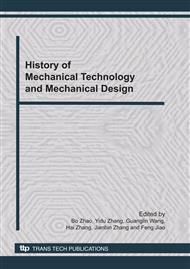p.426
p.431
p.436
p.440
p.444
p.449
p.453
p.457
p.461
Research on Crack Mechanism of Surface/Subsurface Based on Grinding Stress Field in Ultrasonic Grinding Nano-Ceramics
Abstract:
The crack nucleation and propagation process in ultrasonic grinding engineering ceramics are studied based on indentation fracture mechanics. The study shows ultrasonic grinding can be considered as continuous loading and unloading process in view of a single grain. The loading makes cracks form and preliminarily propagate; while the unloading makes them propagate further and makes the direction of crack propagation offset to the workpiece surface, not so far as to extend to the material interior. In common grinding cracks have extended to the material interior, resulting in deep subsurface crack in the subsurface layers. In this paper, the ground surface of small crack damage can be obtained with large grinding depth in ultrasonic grinding compared with common grinding under the same conditions.
Info:
Periodical:
Pages:
444-448
Citation:
Online since:
November 2010
Authors:
Price:
Сopyright:
© 2011 Trans Tech Publications Ltd. All Rights Reserved
Share:
Citation:


